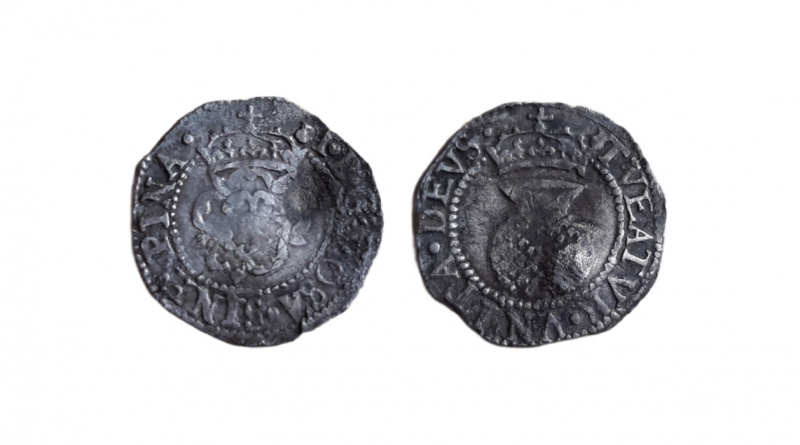Scottish two shilling piece of James VI
On the obverse is a crowned rose and a legend reading I D G ROSA SINE SPINA. On the reverse is a crowned thistle and the legend on this side reads TVEATVR VNITA DEVS. The reverse legend translates as ‘May God guard these united’; ‘united’ refers to the kingdoms of England and Scotland. On both sides the mint mark is a thistle and there are stops in the legend.
This is the size of a halfgroat and I D G stands for James Dei Gratia. However, was this struck for James I of England, who was also James VI of Scotland? The design and legend on English halfgroats struck during the third coinage of James I are exactly the same as on Scottish two shilling pieces struck after James VI became James I of England. So is this coin an English halfgroat of a Scottish two shilling piece?
The only difference between the two coins referred to above is in the reverse legend. English third coinage halfgroats have no stops in the reverse legend but Scottish two shilling pieces do have stops. Michael’s find clearly has stops on the reverse, so it is a Scottish two shilling piece of a type stuck after James VI gained the throne of England. In Coins of Scotland, Ireland and the Islands this coin is listed as number 5509.
Valuation
Overall, in terms on circulation wear, the coin would grade good Fine. However, a significant minus point is the deep dent by I D G on the obverse. It’s a scarce coin but with the noticeable dent my price range would be no higher than £12 – £15.
The point to remember here is that some coins that appear to be English can in fact be Scottish and they are often more valuable.
Coin Valuation Service
Have your coin or artefact valued using my free online coin valuation service

